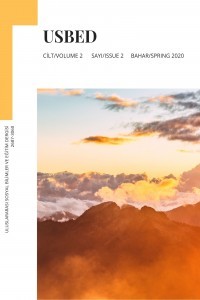Economic Impact on Host Communities: A Comparative Study of Rohingya and Afghan Exodus
KeyWords: Rohingya refugees, Cox’s Bazar, ARSA, Afghan refugees
Economic Impact on Host Communities: A Comparative Study of Rohingya and Afghan Exodus
Rohingya refugees, Cox’s Bazar, ARSA, Afghan refugees,
___
- Ahmad, S. M., & Naeem, N. (2020). Adverse Economic Impact by Rohingya Refugees on Bangladesh: Some Way Forwards. International Journal of Social, Political and Economic Research, 7(1), 1-14. DOI: 10.5281/zenodo.3698176
- Baha, L. (1986). Afghan refugees: Socioeconomic implications. Islamic Studies, 25(2), 161-179. Available at: https://www.jstor.org/stable/20839765?seq=1
- Baloch, A., Shah, S. Z., Noor, Z. M., & Lacheheb, M. (2017). The economic effect of refugee crises on neighbouring host countries: Empirical evidence from Pakistan. International Migration, 55(6), 90-106. DOI:10.1111/imig.12389
- Bhatty, S. (1987). Impact of the Afghan refugees on Pakistan. FIU Electronic Theses and Dissertations. Available at: https://digitalcommons.fiu.edu/etd/1674/
- Centlivres, P., & Centlivres-Demont, M. (1988). The Afghan refugee in Pakistan: An ambiguous identity. J. Refugee Stud., 1, 141. Available at: https://core.ac.uk/download/pdf/85213452.pdf
- Chambers, R. (1986). Hidden losers? The impact of rural refugees and refugee programs on poorer hosts. International migration review, 20(2), 245-263. Available at: https://www.jstor.org/stable/2546034?seq=1
- Huang, C., Ash, N., Marcus, S., & Kate, G. (2018). The Rohingya Crisis: Bangladesh Deserves a Win-Win Solidarity Compact. Center for Global Development. Available at: https://www.cgdev.org/publication/rohingya-crisis-bangladesh-deserves-win-win-solidarity-compact
- Kim, H. (2017). A Complex Crisis: The Twisted Roots of Myanmar’s Rohingya Conflict. Global Asia, Vol.12, No.3,( Sep, 2017): 259 Available at: https://www.globalasia.org/v12no3/focus/a-complex-crisis-the-twisted-roots-of-myanmars-rohingya-conflict_hyuk-kim
- Khan, M., & Dempster, H. (2019). Sharing Responsibility for the Rohingya Crisis What Role Can Labor Mobility Agreements Play. Available at: https://www.cgdev.org/sites/default/files/sharing-responsibility-labor-mobility.pdf
- Kipgen, N. (2017). The Rohingya conundrum (Special Report #186). Institute of Peace and Conflict Studies. Available at: https://www.jstor.org/stable/pdf/resrep09383.4.pdf?refreqid=excelsior%3Adc5234b89452d4eb5e8070a07e974f72
- Mahmud, T. (2017). Rohingya Influx: 15- year- old forestation project destroyed in 57 days. Dhaka Tribune. Available at: https://www.dhakatribune.com/bangladesh/2017/10/21/rohingya-influx-15-year-old-forestation-project-destroyed-57-days
- OCHA. (2018). Rohingya Refugee Crisis. Available at: https://www.unocha.org/rohingya-refugee-crisis
- Population Trends. (n.d). UNFPA. Available at: https://bangladesh.unfpa.org/en/node/24314
- Sajjad, T. (2020). What Motivated the country to open up its borders. The Conversation. Available at: https://theconversation.com/as-bangladesh-hosts-over-a-million-rohingya-refugees-a-scholar-explains-what-motivated-the-country-to-open-up-its-borders-133609
- Siddique, W. (2019). The impact of Rohingya refugees on the local host community: the case of Cox’s Bazar in Bangladesh (Master's thesis). Available at: https://trepo.tuni.fi/bitstream/handle/10024/116089/SiddiqueWahiduzzaman.pdf?sequence=2
- The New Nation. (2017). Cox’s Bazar Tourism Sector Faces Serious Setback. Available at: https://thedailynewnation.com/news/154542/coxs-bazartourism-sector-faces-serious-setback.html
- UNHCR. (2019). Population Map. Available at: https://data2.unhcr.org/en/documents/download/74385
- UNDP. (2019). Impacts of the Rohingya Refugee Influx on Host Communities. Available at: https://reliefweb.int/report/bangladesh/impacts-rohingya-refugee-influx-host-communities
- UNHCR. (n.d.). Pakistan. Available at: https://www.unhcr.org/pakistan.html
- Wake, C., & Bryant, J. (2018). Capacity and complementarity in the Rohingya response in Bangladesh. Capacity and complementarity in the Rohingya response in Bangladesh. Available at: https://www.odi.org/sites/odi.org.uk/files/resource-documents/12554.pdf
- YILMAZ, M. L., & Talukder, M. I. A. Economic Impact of Rohingya Exodus on Bangladesh. Liberal Düşünce Dergisi, 24(95), 111-129. Available at: https://dergipark.org.tr/en/download/article-file/823860
- Başlangıç: 2019
- Yayıncı: Aytekin DEMİRCİOĞLU
The Increase of Online Food Delivery Services During the Pandemic Covid-19
Evren KUTLAY, Zehra Tülin DEĞİRMENCİ
Choulia CHATİP İSMAİL, Hatice ŞENGÜL ERDEM, Yeşim FAZLIOĞLU
Genç Yetişkin Erkeklerin “Baba” Kavramını Değerlendirmeleri
Salih YEŞİL, Sümeyye YILDIZ, Başak ŞITAK
Pazarlama Yönetiminde İnsan Faktörü: İçsel Pazarlama ve İç Müşteriler
Sahure Gonca TELLİ, Tansu IŞIKAY, Canan DEMİR
The Importance of Profitability and Dividend Policy for Indonesian State-Owned Enterprises - BUMN
Covid 19’un Küresel Tedarik Zincirine Olan Etkisi Üzerine Bir Çalışma
